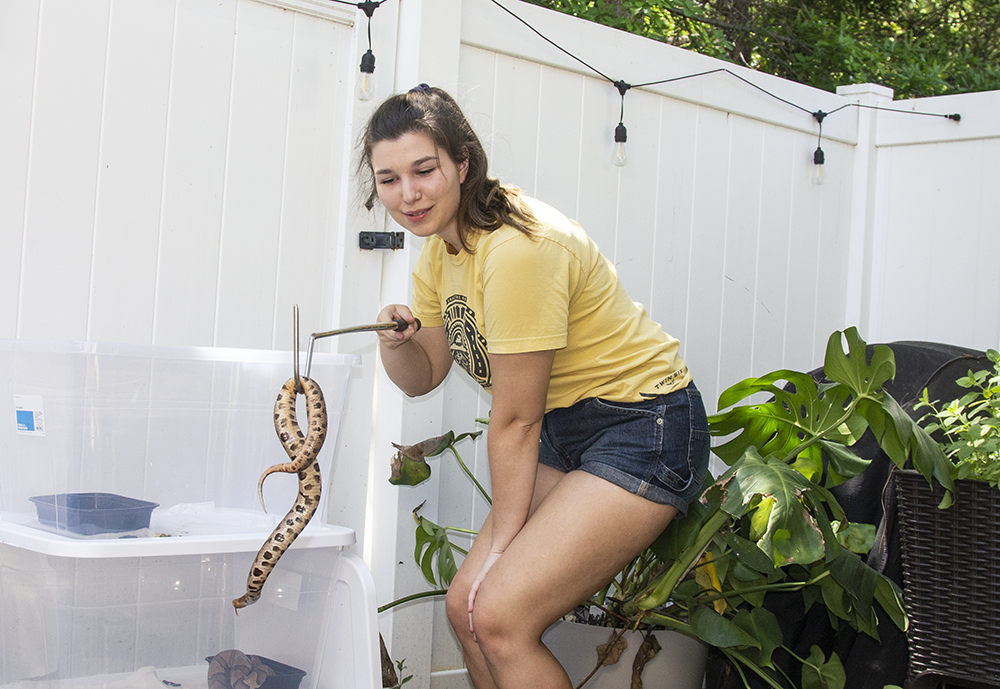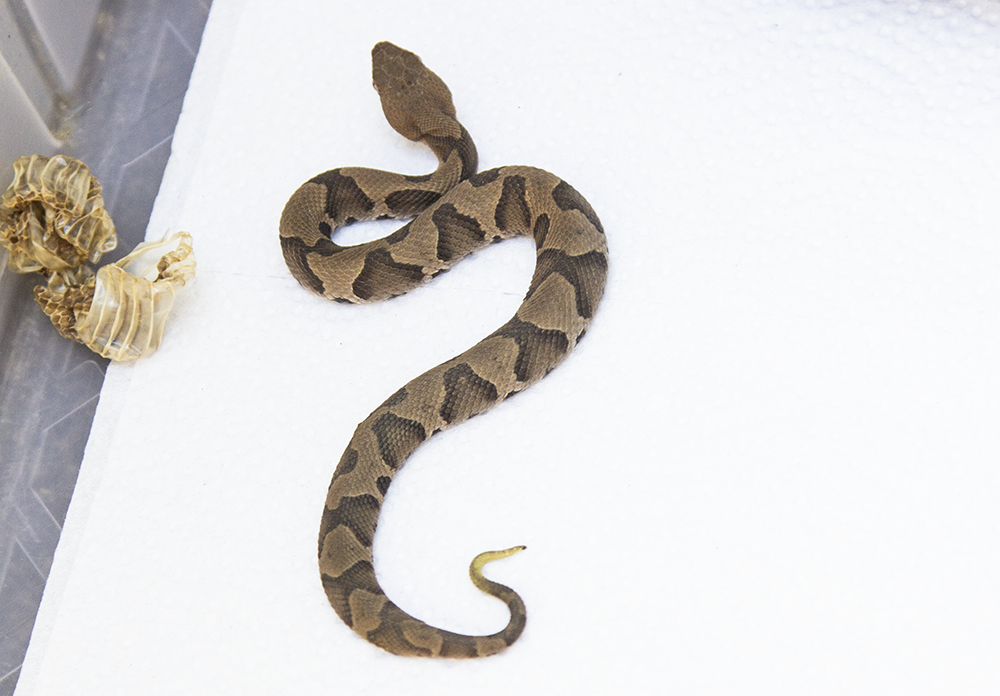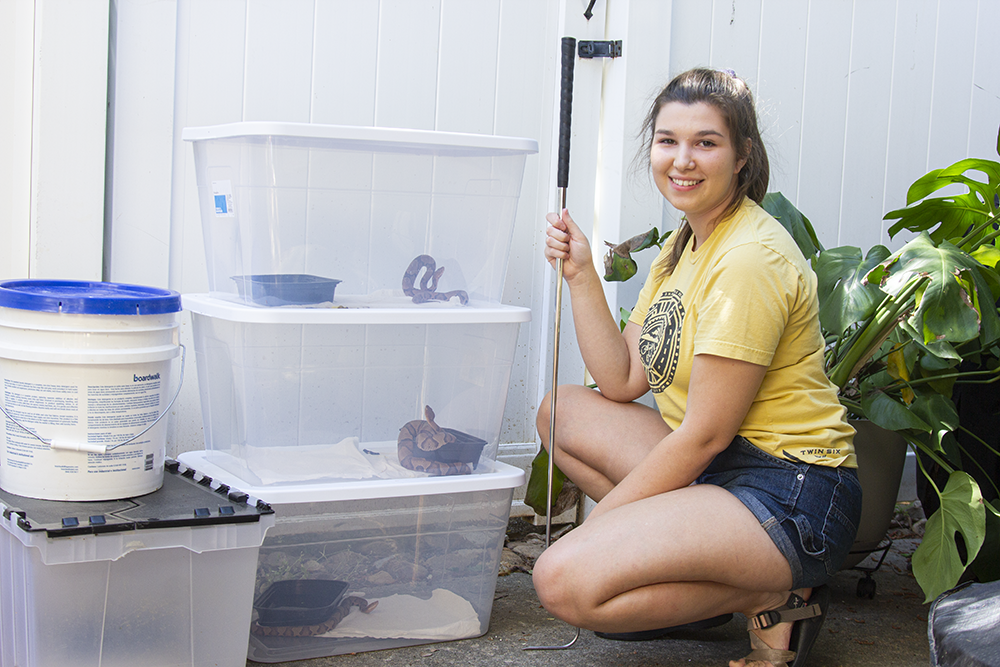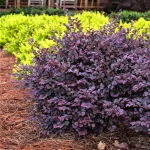A Brief Field Guide to Snakes in the Sandhills
We’re talking snakes, literal ones, not the ones who help themselves to your lunch in the break room fridge. As it begins warming up, chances are you’ll see more nope ropes. Like everything else you find on a bar patio, all snakes’ mating season is spring.
But before you immediately go into kill mode, Emma Eldridge, a semi-local wildlife control agent certified in relocating snakes, says, “it’s important to have a little knowledge on snakes in North Carolina” — because some snakes are really beneficial to the ecosystem.

Better Stay Away from Copperhead Road
North Carolina is home to about 40 species of snakes. Mark Prinz, of Weymouth Woods State Park, says 32 species found in the Sandhills and of that there are only two venomous snakes to mainly worry about: Cottonmouths and Copperheads. Rattlesnakes are another venomous snake found in NC, but are less common in Moore County.
The most common non venomous snakes are rat snakes and racers, both of which eat rodents. Another fairly common snake in the Sandhills is the Hognose snake, which looks more threatening than it is. “It will hiss and flare up like a cobra but is non-venomous and is even known to play dead,” says Mark.
FYI: If you come across snake eggs, they are laid by non-venomous snakes. All of the venomous snakes in the area give live births, which is weird as hell. So while you may not be down with snake babies in your yard, you can at least have peace of mind that they won’t be harmful to you.
So what do you do if you find a snake but you don’t know what it is? Leave that danger noodle alone! Emma is also an admin of the N.C. Snake Identification & Education Facebook group and recommends posting a photo of the snake in there.
“Unless the snake is in your house, near your pet etc., it’s best to see if it’ll move along on its own. If you need it though, there is also a free relocation facebook group that can help out,” says Emma. Typically, snakes won’t strike unless you antagonize them so it’s best to leave it to the pros.

Emma says a good way to identify copperheads is that they are brown and have dark bands on their pattern that resemble Hershey kisses. Cottonmouths look more pixelated. Both tend to hide in pine straw, under leaves and outdoor furniture. Rat snakes and racers are both black snakes and “their bites don’t feel any worse than a needle prick,” Emma says. Yes, she’s been bitten.

A fun fact about copperheads? Their venom is being used in research for breast cancer. “This is important,” says Emma, “because they don’t only fill an environmental role, they have a human benefit.”
“My best advice is to put your eye somewhere before your hand, especially when doing something like gardening or moving outdoor furniture,” says Emma.
So where does someone like Emma take the nope ropes? Don’t worry, they can’t just be relocated anywhere. They are legally only allowed to be released on private land with permission of the landowners. Emma says she gets several calls a week to relocate snakes.

Emma Eldridge resides in Raleigh and is about to graduate from North Carolina State University. She majored in zoology and minored in wildlife science. She will soon be attending veterinary school with the intention of focusing on Zoological medicine, Wildlife, and exotics, also at N.C. State. She is licensed by the state of NC as a Wildlife Damage Control agent to offer free snake relocation services whenever she’s available. She has been relocating and educating others on nope ropes for about two years.



